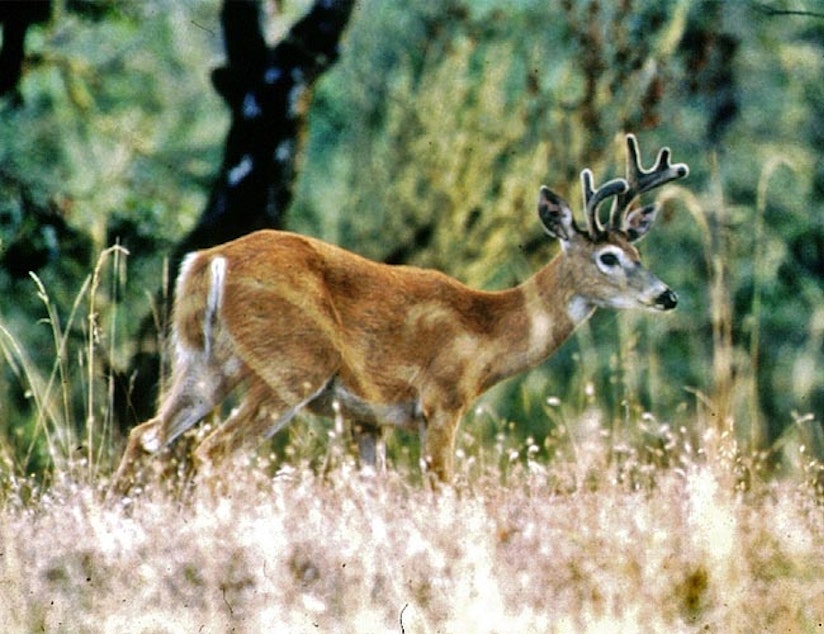Animal advocacy group files complaints against WSU research animal deaths

An animal advocacy group alleges Washington State University broke federal law after several animals died under the university's care.
University veterinarians said the deaths, while unfortunate and sad, happened during a known disease outbreak and because of common anesthesia risks.
“All of these deaths have been preventable,” said Michael Budkie, executive director of Stop Animal Exploitation NOW!, or SAEN. “Washington State University needs to start following federal regulations or not allowing this research to be performed.”
However, WSU officials said the university follows the federal Animal Welfare Act regulations and the Public Health Service Policy on Humane Care and Use of Laboratory Animals, noting the U.S. Department of Agriculture didn’t identify any non-compliances during its inspections in 2021 and 2022.
In addition, the animal care and use program received full accreditation in the fall of 2021 from an outside review by the Association for Assessment and Accreditation of Laboratory Animal Care International.
Sponsored
Budkie learned of the animal deaths after placing regular Freedom of Information Act requests. In meeting minutes from the university’s Institutional Animal Care and Use Committee, he read that five deer, one elk and one alpaca died in a bluetongue and epizootic hemorrhagic disease, or EHD, outbreak. Minutes from a separate meeting show two elk were euthanized and two elk died after developing pneumonia post-anesthesia.
The university disputes those numbers. In the case of the bluetongue and epizootic hemorrhagic disease outbreak, three dead deer died overnight, two others were later euthanized after treatment failed, and two deer recovered after treatment, said Nina Woodford, the campus veterinarian for WSU.
Bluetongue and EHD are spread to deer from insect bites, specifically midges, also known as no-see-ums. During droughts, high numbers of infected midges are found in wet, muddy areas near water where deer congregate in the summer and early fall.
In 2021, Washington saw high numbers of infected wild deer die-off from bluetongue and EHD outbreaks.
Symptoms, including trouble breathing, come on quickly, and there is no cure for the virus, Woodford said. Veterinarians can monitor and treat animals for fever and dehydration.
Sponsored
“It often has a very rapid onset, and animals can develop severe disease very quickly,” she said.
In the complaint, Budkie said researchers should have monitored the animals more often, which would have prevented the overnight deer deaths.
Woodford said all animals at WSU are monitored at least once a day, some more often than that. Once someone reports a sick animal, veterinarians immediately care for the animal.
After the first report of the outbreak, WSU moved some deer inside to limit exposure to the midges, Woodford said. In addition, they sprayed insecticides in the area and on the animals to reduce midge bites. They also put larvicides in water troughs, often used to limit mosquitos, to reduce the midge reproduction near water sources, she said.
Vaccines can help with some strains of bluetongue, Woodford said. Officials conducted necropsies of the animals that died and sent samples to the state diagnostic labs to confirm th cause of death and determine which strain of virus each deer had. However, an October hard frost killed the midges off, which stopped the outbbreak, before the strains were determined.
Sponsored
It’s difficult to vaccinate deer ahead of time because the vaccines only work for certain strains of bluetongue, she said.
“We can be more prepared for the next time we have a severe drought and might be able to find a vaccine strain that we could use if this happens again,” Woodford said, of the information they gathered after the 2021 outbreak.
In the case of the elk that died after receiving an anesthetic, Budkie said the university researchers should have used endotracheal tubes during anesthesia.
Woodford said those types of tubes are used in longer procedures and have not been used in the shorter anesthesia immobilizations of elk.
WSU often anesthetizes elk to study elk hoof disease, which cripples wild elk, especially in Western Washington, Woodford said. Researchers must anesthetize the elk to safely examine their hooves.
Sponsored
Under anesthesia, animals can aspirate and then develop aspiration pneumonia. Any ruminant animal, such as elk, cows and sheep that have compartmented digestive tracts, have a slightly higher risk of regurgitation when undergoing anesthesia, Woodford said.
In 2021, one elk was euthanized after it didn’t respond to antibiotics and another died after receiving treatment, she said.
Of the more than 120 anesthetizations over the last few years, two elk have developed pneumonia as a complication, Woodford said.
“We take any losses very seriously and made modifications to increase the fasting time for the animals and use of the modified wedge pillow. We have had no additional cases with these modifications,” Woodford said.
After the two deaths, the university developed special wedge pillows to partially lift the elk’s head during anesthesia to try to prevent aspiration, Woodford said.
Sponsored
Budkie’s advocacy group, SAEN, submitted its complaint to the U.S. Department of Agriculture, which regulates animals used for research under the Animal Welfare Act. Budkie said the federal agency should level the maximum fine of $12,722 per infraction per animal.
“If you’re looking at wildlife research, this is supposed to be performed for the benefit of the animals, the benefit of the environment, and so they shouldn’t be dying unnecessarily,” Budkie said. [Copyright 2023 Northwest News Network]
